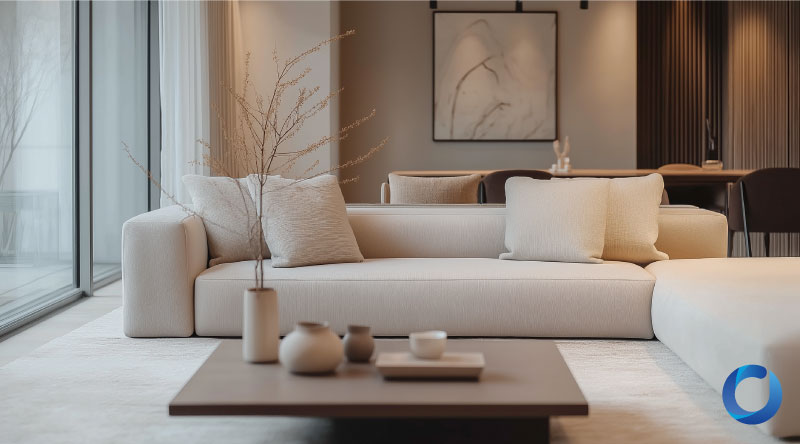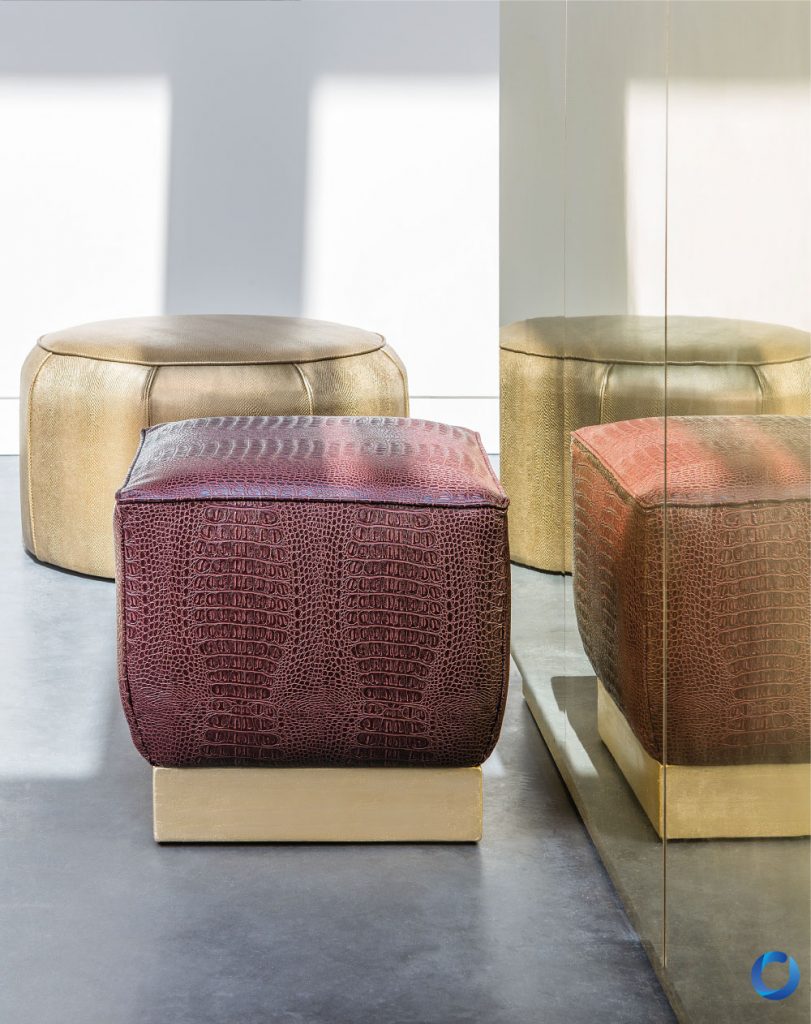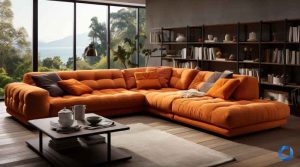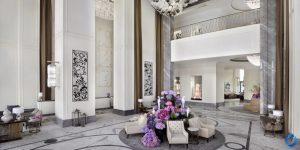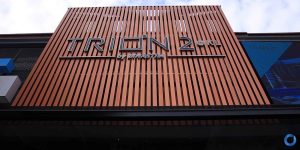Blending Comfort, Durability, and Style to Elevate Contemporary Living Spaces
Innovative Upholstery Fabrics for Modern Homes
By Sheryll Low
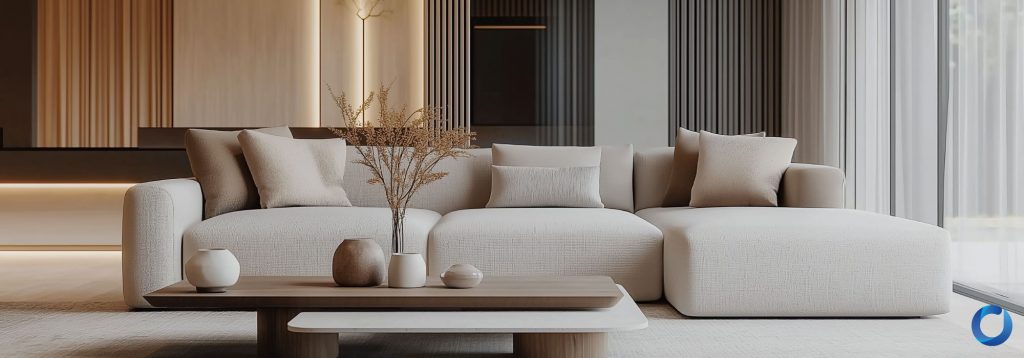
The concept of a home is made feasible through a lens of consensus. It is a common ground for resting, family, warmth, and privacy, a standard hallmark of privilege and security in the modern world. As the dome sheltering us changes with time, overcome brick by brick, so does the interior we occupy ourselves in. The house is a body, moving space evolved by our historical, arguably intrinsic appreciation for aesthetics and practicality combined. These bricks and popcorn walls are stumps in the aftermath of inhabitation, but buried deep within this skeleton something has also changed, and reformed in opposition, layer by layer, is our furniture.
Fabric, pulled so thin and fine through tribulations, have endured human pressure the most, and so it constantly fluctuates with the flow of given cloth. The furniture’s simply another matter of rich, assembled wood and screws. It’s the fabric stretched over it that is true muscle and skin, better known in the industry specifically as upholstery fabric. Upholstery fabric holds the umbrella for the general textiles purposed for furniture, and the ‘upholstery’ refers to the padding and stuffing in furniture. They are the plush covers for the cushioning that is found in sofas, couches, chairs, headboards, and even pillows, affirming firmness and pleasant shape around soft materials that would be anything else otherwise. In a home, its presence is dedicated to your comfort, and choosing your own upholstery fabric for furniture is a regular practice.
Although, with that being said, the process of selecting what is most appropriate is only partially difficult in comparison to not knowing the nature, properties, and innovations committed to upholstered fabric for modern homes, which will be the core discussion for our blog post today. Upholstery fabric is incredibly versatile, as it has learnt to be, and overtime it has separately undergone a considerably wide arc of improvements and changes, be it the patterns, the fabric material itself, and its properties; you are thus guaranteed to find a utopian match for your homely furnishings after this brief article.
Innovation: Fabrics Galore
As there are many modifications and potential modifications to these fabrics, we will first discuss their practical range before delving into the important changes made to upholstery designs.
Upholstery Fabrics: The Technical Thumb
The origins of upholstery fabric have to do with the harvest and weaving of natural resources. As such, upholstery fabrics are traditionally made with a variety of cotton, linen, silk, leather, wool, or experimentally a combination of them for properties desirable during their prime era. You also have fabrics comprising modal, which is a semi-synthetic material made of cellulose from beech wood. Beech wood, derived from the deciduous Fagus, on itself can be considered as hardwood, and its common agricultural cultivation across Eurasia for malleable, engineering functions underlines the cause for its low, affordable pricing, but marked up when converted for cut fabric due to its elaborate process and its recognition as a woven textile. This is only one example of the intricate background of a seemingly simple piece of upholstery material among the variety our civilization now has access to.
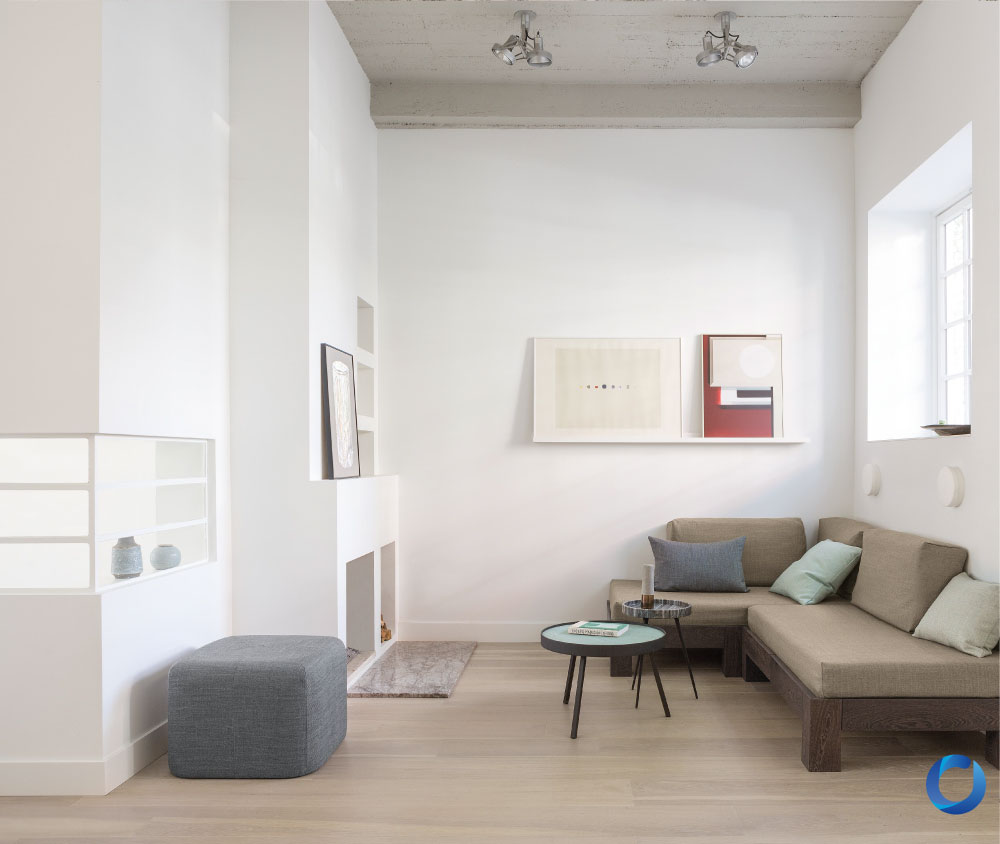
As you may observe, many existing variations of the upholstery fabric of modern times still fall back on nature’s diverse plants and trees to be repurposed for our furnishings. Cotton and wool have not been replaced in any impactful capacity, rather they continue to flourish alongside the new wave synthetic bases. Over decades of industrial development, more and more facets of upholstery fabric have become accounted for, and so the materials used in their production process undergo role compression for these different factors. These aforementioned factors are then pushed as an enforced standard concerning quality, durability, insulation, breathability, absorbency, weight, and fireproofing. There exists what the tailors frequently referenced Martindale Rub Test, or simply ‘rub count’, which is a practical, quantifying process whereby fabric samples are, as the method suggests, rubbed against an abrasive surface with a select amount of force to calculate how many rubs it can take before the fabric begins to show affected signs. This first of the many to come is a phenomenon known as yarn break, and if you have any plans on padding new upholstery for your furniture, it’s good to look into the technical durability of your desired fabric first.
The upholstery we are discussing is used primarily for home furniture, and must be heavy duty to endure the daily abrasion from an ordinary family, including as well the foreseeable presence of indoor pets, guests, and children. Modern synthetic upholstery consists of acrylic, polyester, rayon or viscose, nylon, and acetate, and they are all solid contenders in the category of withstanding such pressure, among other traits such as water resistance (low absorbency) and flame retardant properties. To innovate on increased durability, it is thus even more common now to chemically experiment with synthetic fibres, and it was what birthed polypropylene, a form of nonwoven, thermoplastic pliable used in our packaging and fabric. Polypropylene’s strongest quality is that it is stain resistant due to its relationship with liquid absorption. If this piques your interest, consider checking out our vast shelf of upholstery fabrics, with inspiring collections Outshine, Dodge, Grove, and Sit Out featuring both lavish polyester and polypropylene textiles tailored for the modern home.
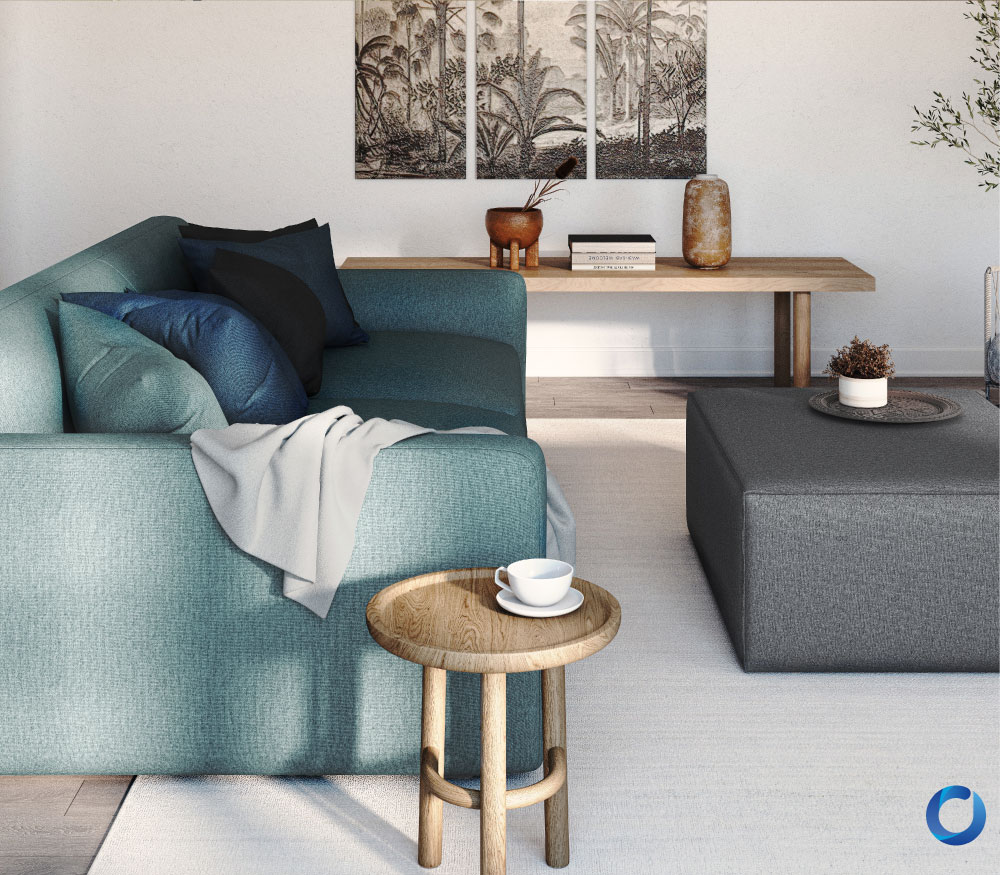
In any case, polypropylene is not the only case of plastic-turned-miracle; a relatively recent piece of German textile study, Aachen Technology Overview of 3D Textile Materials and Recent Innovation and Applications, highlights the ongoing research in the interests of 3D weaving and knitting of fabric, that is to say, and stick with me here, the composite manifestation of the z-axis, polymer-construct through advanced machinery. I imagine you would have to just think of 3D fabric and its process as a crepe cake, or at least the baking procedure of a crepe cake. It has layers, like any standard cloth does, but what thinly separates it from ‘2D’ fabric is the reiterated concept of yarn architecture, and that having more than 3 yarn architecture for its design is what earns it the label of being 3D. ‘Yarn architecture’ is just a formal way of consolidating the details of geometric principles in the fabric’s design, and it is quite different when printed out and held in hands, resembling sponge closely more than what you would traditionally catalogue as fabric. And while the technology remains largely in development and experimentation, 3D fabric does have multiple benefits: reduced material consumption, less production steps involved, and lower production costs as it depends on automation more than laborious transference with naturally weaved fabrics such as wool and cotton would.
Ultimately, the development of 3D fabrics, which has potential rivalling the synthesis of polymers into polypropylene, promises a robust and diverse application in furniture and subsequently upholstery in the near future despite their rarity at the present moment. The innovation of the very structure of the fabric itself is important and is what maintains and improves the standards of safe, comfortable, and modern living. Synthetic fabrics carry this responsibility far and wide when their desirable properties such as being flame retardant, found especially in specific polymers, are discovered to have these advantages ascribed purely due to their chemical and molecular nature. It is how we make furniture softer, stronger, one study at a time.
In addition to cross-hatching materials to optimise high quality and ‘-proof’ upholstery fabrics, sustainability is another factor which many fabric companies are also dedicated to, and Acacia is no exception. This means gradually reducing synthetic materials that contribute as pollutants in the environment, or recycling them into a secondary yet reusable form, with one example being recycled polypropylene. Fabrics such as this are known as eco-fabrics, and how sustainable or eco-friendly is contingent on the process and ingredients involved in their manufacturing. This includes the way the fabrics are dyed, and the upholstery fabrics in our collections are solution dyed, which is a method of locking colours into the yarn fibre before it’s spun into a tangible article of fabric. 60% less water used and reduced carbon dioxide emission, solution dyeing is more sustainable as a result. From other fabric producers, we see as well the use of bouclé yarn, and articles coming out that even 3D fabrics can be considered sustainable.
Sustainable fabrics are the quickly improving reinventions of this industry, so reupholstering your furniture with them is sure to lend a clean, refreshing outlook in your living spaces. With this, we may now proceed to the anticipated section of upholstery pattern and design trends.
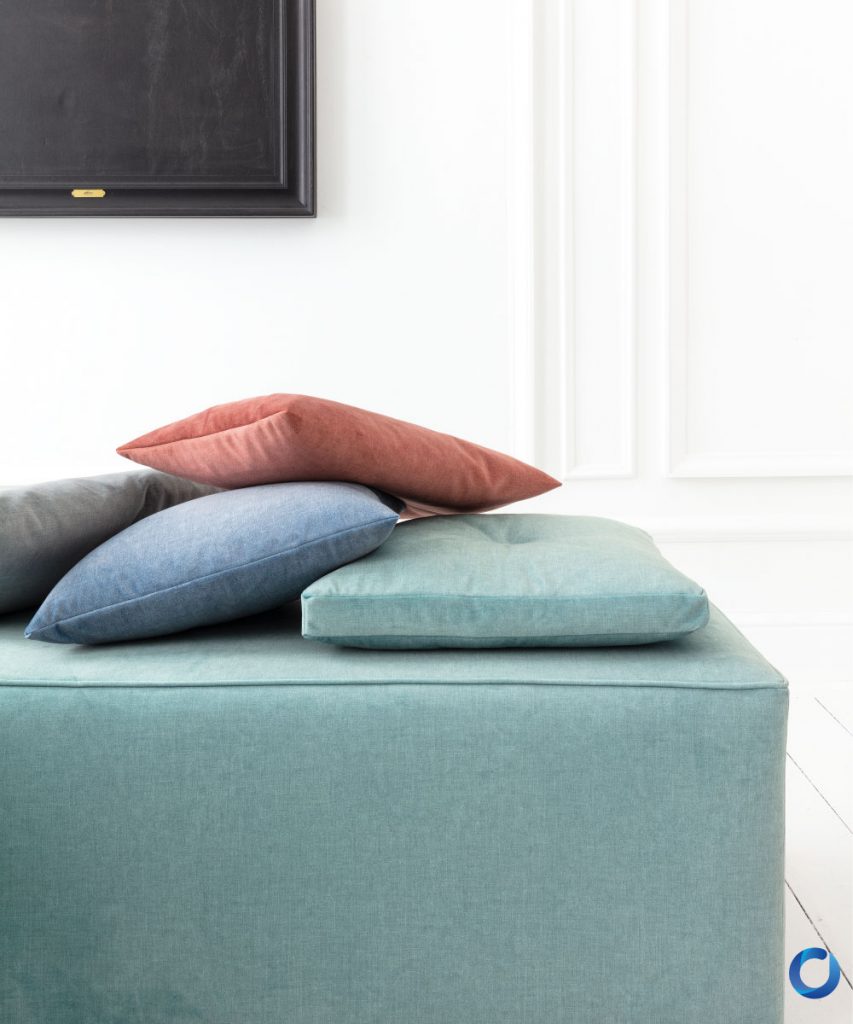
Upholstery Fabrics: Reviving the Principles of Design
Of course, we cannot talk about innovative upholstery without mentioning the aesthetic appeal it holds in the place of our homes. Upholstery fabric generally offers a wide selection in their creative designs, and has even revived some patterns that were previously deemed outdated. While this section is certainly focused more on the trendy appearances of the fabric rather than the composition of the fabric itself, it is nevertheless an essential in the celebration of artistry that deserves to be tufted into your furniture in warm capacity.
Chevron & Herringbone
This iconic duo is rarely out of season, and remains as top choice for homeowners who favour a calm, natural tone that brings the wild into their occupied environment. The pattern chevron runs V-shaped markings down like the grooves of a tree, retaining an ancient, primordial simplicity that is reminiscent of fossils and nature. Its partner, herringbone, intersects its rectangular shapes, forming a strong impression of sturdy wood. While both patterns are usually seen on flooring, they translate equally well on upholstery fabrics, and the combination you can have with them, be it with the colours and whether you choose to make them pop with custom embroidery, lends them an interesting appearance.
Geometrics
Arguably, geometrics are some of the most versatile patterns available for textile printing. Fundamentally you have your circles, squares, rectangles, triangles, ovals, cubes, spheres, and pyramids, but it functions in the repetitive beauty of overlapping the same pattern of your choice endlessly on the fabric. It innovates itself and is a form of art that still discovers new ways to reappear on our furniture every now and then, more popular with homeowners with a taste for cohesive aesthetics.
Chinoiserie
Ever observed the elegant, oriental stroke of Chinese pavilions, carnations, dragons, and birds on some European fabrics? They are a form of artistic interpretation of Chinese motifs by Europeans, and they’re called chinoiseries. They are a bit uncommon in modern homes, but are very unique as a result, and if upholstered right on furniture, can excellently display vivid elements of a foreign culture, which may be perceivably inspiring to guests.
Parametric design
The only technical and true innovative aspect of this section, as we will discuss here briefly, is the use of technology in what is the somewhat abstruse technique known as parametric design. Put simply, they are designs mapped out by algorithms for the purpose of creating highly complex and often sophisticated spatial structures. They are mathematically engineered, and hence notable for their eccentric, architectural presence in the world. There is no concise or accurate way of describing a parametric design aside from its unconventional qualities, its play on spatial occupation as a whole, and that they are usually non-Euclidean in body. Think geometric, but almost impossibly warped and twisted. On upholstery fabric, they can partake in a highly engaging and kinetic visual presentation because of this specialty – they can even be the furniture itself.
Summary
All in all, we come to celebrate the diverse innovations in which upholstery fabric continues to progress and refurbish itself for the cover of our furniture. In modern living, there is so much variety to how fabric can take hold and be shaped that you will surely find something new and exciting, but most importantly, suitable for the body of your home.
References link:
FibreGuard. (2024, January 19). How to mix and match upholstery fabrics like a pro. https://fibreguard.com/blog/how-to-mix-patterns-and-upholstery-fabrics-like-a-pro
Springer. (2022, March 3). Aachen Technology Overview of 3D Textile Materials and Recent Innovation and Applications. https://doi.org/10.1007/s10443-022-10011-w
Looking for quality sofas with creative fabrics and easy maintenance? Find the nearest showroom at acaciasofa.co
If you are searching for the perfect curtain to express your personality at home, find our nearest boutiques at acaciacurtain.co
Article Suggestion :
- Upholstery Care: Tips and Tricks for 2024
- Upholstery Trends Combining Comfort and Style
- The Impact of Textile Technology on Modern Upholstery
- Small Space Solutions: L-Shaped Sofas For Apartment Living
- L-Shaped Sofas: A Guide To Choosing The Right One For Your Home
- Stylish L-Shaped Sofas For Contemporary Living Rooms
- The Best L-Shaped Sofas For A Maximised Living Space

